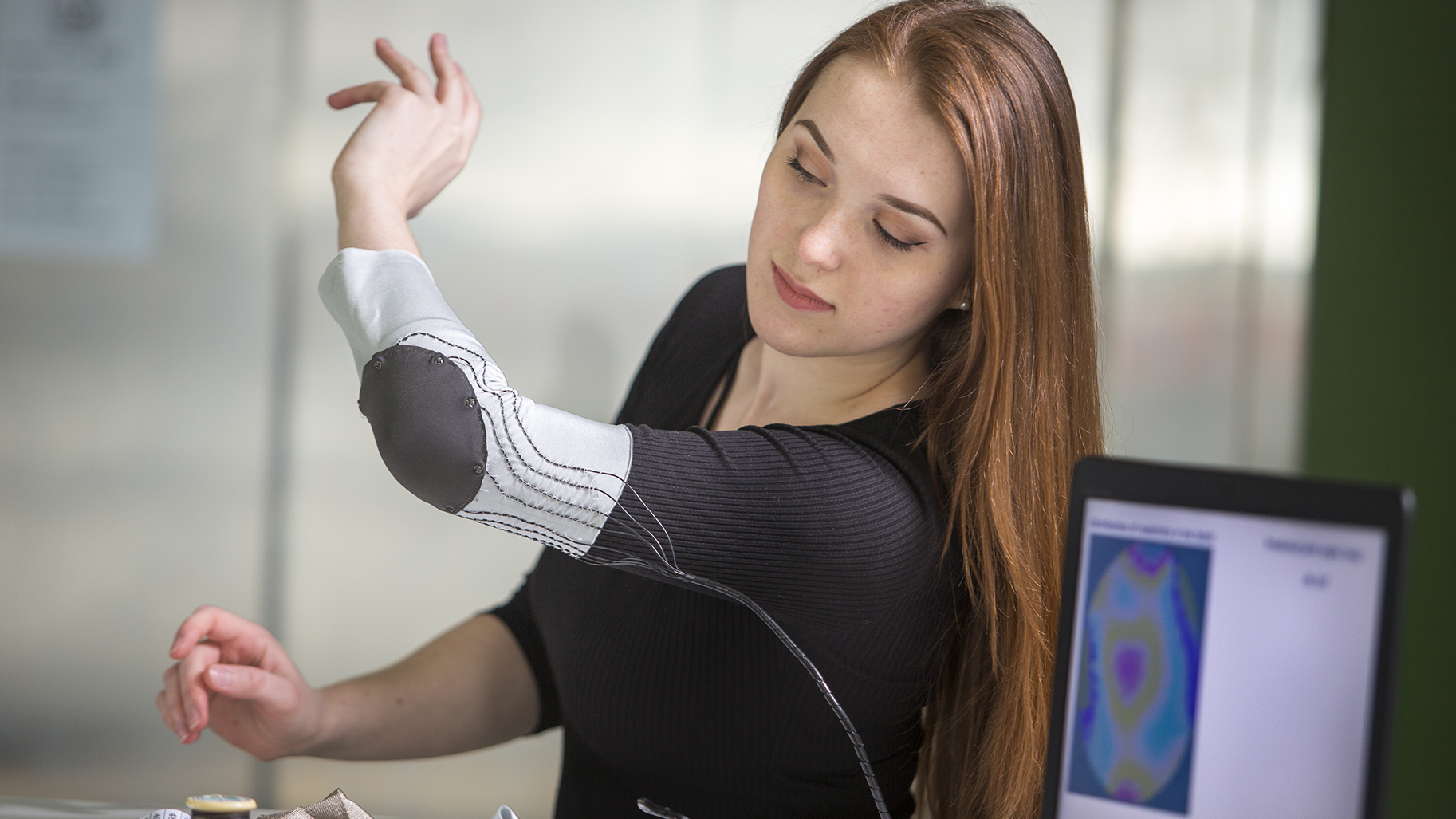Touch Sensity, transforming materials into sensitive surfaces
Date:
Changed on 29/09/2022

The technology developed by our start-up, Touch Sensity, is capable of making objects and materials sensitive to physical interactions (irrespective of whether the material is hard, soft or a liquid). This non-intrusive technology gathers data on the pressure applied to material, as well as how it is extended or distorted or any damage it sustains, while respecting the material’s topology and without the use of sensors.
Through a combination of an embedded system connected to the material and an artificial intelligence system or parametric models, all physical interactions with the material can be modelled in real-time. This makes it possible to transform the material into a sensitive surface, in addition to linking the data obtained to the environment or controlling external systems using these same interactions. This innovative technology can be adapted to a range of different applications, such as predictive maintenance, sensor systems, intelligent composite materials, HMIs, etc.
There is growing demand for intelligent materials, whether for creating connected materials or developing data acquisition systems. From detecting impact on or changes to the shape of a structure in predictive maintenance and designing prosthetic limbs that restore the sense of touch to developing connected walls and floors for so-called “smart” homes, developing new solutions in the smart materials sector will be one of the major challenges in coming years. As was the case with the emergence of touchscreens, the development of connected and sensitive objects and materials will add a new dimension to human-machine interactions and help with the acquisition of a whole host of information, including system operating states.
However, there are currently three problems standing in the way of smart materials:
These are the three problems that we at Touch Sensity have sought to address using our Touch Tech technology, which involves a full acquisition and processing system connected directly to the material or object that is to be made sensitive. Over the next two years, the goal for Touch Sensity will be to perfect this technology and work with manufacturers to validate the suitability of this innovative sensor system by evaluating it in an operational context.
The Touch Sensity project came about as a result of a meeting between Anna Pugach and Mehdi El Hafed. Anna had developed promising new technology and Mehdi had experience in entrepreneurship and skills in business development. Their unusual career paths proved to be a great fit, leading to the creation of Touch Sensity.
This project was a continuation of the research Dr Anna Pugach had carried out during her PhD at Cergy-Pontoise University (on the development of artificial skin for robots) and, at Inria in Bordeaux, on the development of connected clothing capable of measuring joint angles for the prevention of musculoskeletal disorders. This then led to the Touch Tech technology developed by the company.
The research carried out by Dr Anna Pugach had established her reputation as an expert in the field of connected sensitive interfaces. Following discussions with manufacturers and experts in the field, it was agreed that launching a start-up would be the best way of showcasing her work.
During her time spent with Inria, Dr Pugach was supported by the Institute’s Transfer, Innovation and Partnerships Division, particularly Cédric Quinot, head of start-up support, who :
The professional meetings made possible through events such as Viva Technology and Bordeaux Tech Day, organised by Bordeaux Technowest, plus market research carried out in January 2020 by an independent firm, confirmed that many companies were interested in using this technology. This convinced Mehdi El Hafed that his decision to support Anna Pugach with the launch of Touch Sensity was the right one.
The project is currently being supported by the incubator Bordeaux Technowest at the Aeroparc site, a support centre for the aerospace and defence industries.